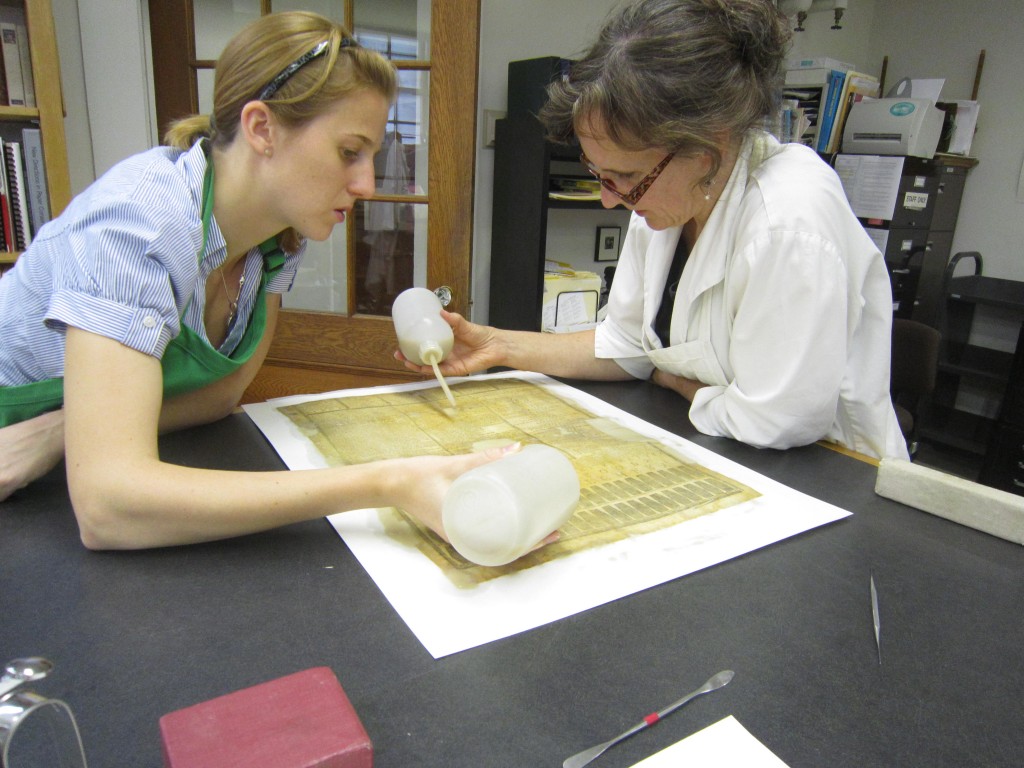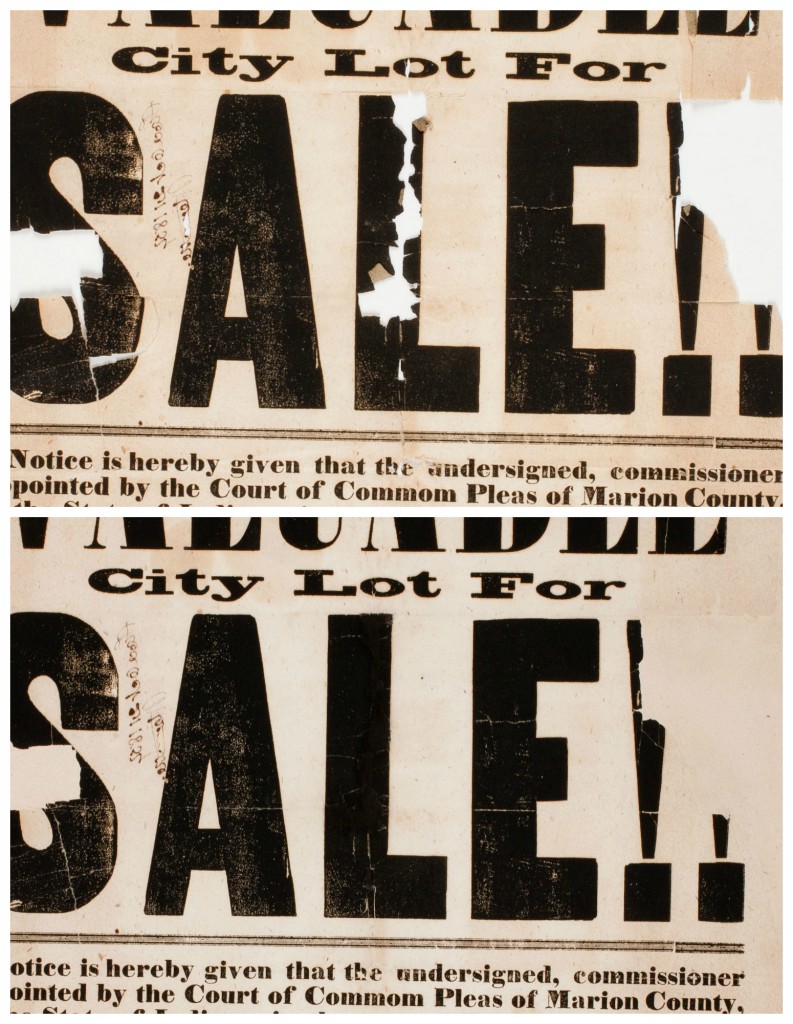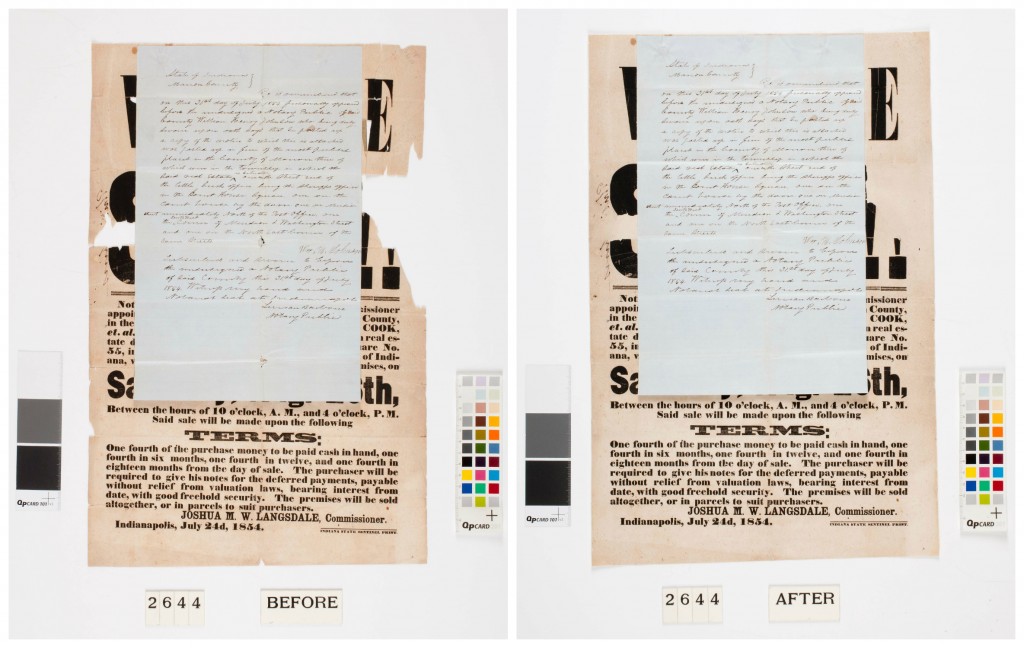Halaina Demba, our guest author here, is a third year student in the Buffalo State College Program in art conservation. She spent this past summer, the final one of her graduate studies, interning in the Society’s book and paper conservation lab.

This summer the American Antiquarian Society received a unique gift of an 1854 broadside with an attached docket. The broadside announces the sale of a “Valuable City Lot” in the city of Indianapolis, Marion County, Indiana. Announcements, like this one, were commonplace during the nineteenth century and could be found posted in prominent areas of a town or city, such as near the post office or courthouse. At the conclusion of an announced event, the broadside would be removed, posted over, or just forgotten; these advertisements would not typically be saved. Consequently, it is rare to find advertisements like this one. It is even more rare to find one that has an attached docket stating who posted the broadside, when it was posted, and locations where the broadside was posted.

While the docket was in stable condition, the broadside was in a marked state of deterioration. The paper substrate of the broadside was extremely fragmented with complex tears and losses predominantly located in the upper half of the document. The paper in the inked areas was observed to be extremely brittle, which further compromised the document’s fragile condition. This document could not be safely handled without conservation treatment. Conservation was undertaken by chief conservator Babette Gehnrich and myself.
After photographic documentation, a thorough assessment, and a consultation with the curator, the broadside was mechanically separated from the docket and then washed with water on a capillary fleece to reduce discoloration.


Losses in the broadside were filled with historic and modern toned paper of a similar color and texture. The many complex tears were first repaired with Japanese paper strips. After consulting with curator of graphic arts Lauren Hewes and chief conservator Babette Gehnrich, it was decided to not tone the large text losses of the broadside. For archival documents, legibility of the written contents and stability of the object are the most important factor of the treatment. Even with the many losses, the text of the broadside was legible. Furthermore, the losses are part of the history of the piece. However, it was decided to fill some of the minor losses with toned paper to create a unified visual appearance.
Next, the reverse of the broadside was lined with a sheet of Japanese tissue that was prepared with wheat starch paste. The broadside was placed under pressure until the paste had dried. The lining tissue was trimmed to the edge of the broadside, and the losses were toned. The treatment was finished when the docket was reattached to the broadside.

I was extremely satisfied with how this treatment turned out. The treatment significantly reduced the condition problems. The inserted fills, repairs, and lining tissue helped to stabilize the broadside. Now the broadside can be safely stored without further loss and damage and, when necessary, handled by researchers.
_________________________________________________________________________________
Docket text:
State of Indiana
Marion county
Be it remembered that on this 31st day of July 1854 personally appeared before the undersigned a Notary Public of said county of William Henry Johnson who being duly sworn upon oath says that he posted up a copy of the notice to which this is attached was posted up in front of the most public place in the county of Marion this of which was in the Township in which the said real estate is ?—- one on the sheet end of the little bush office being the sheriffs office, in the court house Square and on the Court house by the door, one on ?—– street immediately north of the post office, one the south west corner of ?— and Washington street and one on the North east corner of the same Streets
?— and sworn to before the undersigned a Notary Public of said County this 31st day of July
1854. W?— hand and ?———–
?——-
Notary Public.
